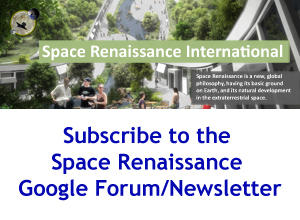What is happening in Egypt these days surrounds us all and anguish, but should give us pause to meditate on, even beyond what the media offer us in terms of facts as well as political and social analysis, that are always confined to the contingent.
We want to take a cue from the article, appeared on the front page of La Repubblica on Thursday, August 8, written by Ian Buruma and entitled “If the world applauds the coup in Egypt.”
The article discusses the two similar political cases of Egypt and Thailand, countries in which, at different times, educated, democrat and liberal citizens have applauded the military coups against democratically elected governments. In Thailand in 2006 and in Egypt in July 2013, the leaders elected and then deposed by military, Thaksin Shinawatra and Mohamed Morsi, were reactionary democrats according to the analysis of Buruma, tending to consider their election victory as an absolute mandate that would allow them to tamper with the Constitution and behave like despots. Also the Turkish prime Minister Recep Tayyip Erdogan “belongs to the same species”, Buruma says, as well as probably would be for the leaders of the Algerian Islamic Salvation Front (FIS) in 1991 if they come to power.
Without wanting to delve too much in the analysis of political processes discussed in the article, however, we must note that, in all cases, we are dealing with countries that have not experienced a true industrial revolution, and yet are imbued, as is logical to expect in the world of global communication and information, from a widespread longing for social growth, as well as democracy, understood as the rule of law where persons are finally citizens, not subjects. Between the abovementioned ambition, some already present in Western countries at the time of the great bourgeois revolution, and democracy, however, there was the great process that goes under the name of the industrial revolution. Industrial development in fact, today much-criticized and greatly underestimated in different ways by all political parties, was for better or for worse the cradle of democracy, since it allowed the development of a vast majority of citizens informed and educated in average, able to orientate and choose (of course with all the exceptions that unfortunately we well know!) so secular and aware, without being over influenced by fundamentalist religious thoughts.
This aspect of industrial development, that is essential for us, is not touched at all by the article. It get lost instead in more or less Byzantine hypothesis about the possible methods to add the “salt” of democracy in society that come directly from tribal regimes without being affected by an industrial revolution, the systems of mass education, the public health or the so called “welfare.” It is therefore an analysis entirely internal and focused on temporary politics, and therefore capable of detecting perhaps some problems, but certainly not possible solutions.
Moreover, the large social processes active in Africa and Middle East are certainly not isolated. They are instead part of a social development, theorized for over two centuries, which is generating an overall situation today increasingly characterized by a state of decay / involution, especially in its most advanced part. Increase in population, scarcity of natural resources and current mankind inability to find new ideas or new ways to move forward portend a macroscopically negative perspective: the probable implosion of human civilization. The history never exactly repeats itself, and today the reaffirmation of the values of bourgeois revolution – freedom, equal opportunity, secularism, the oxygen of democracy – is only possible by opening a new horizon of development, the Space Renaissance. After all, even the first bourgeois revolution came after the renaissance and the discovery of the new world …
On the industrial side, if you look at the life cycle of the great technologies spreading, typically characterized by a periodicity of 100-200 years, we realize that after the Ages of Textiles and Canals, Steam and Railways, Steel, Electricity and Heavy Engineering, Oil, Automobile and Mass Production, Digital Information and Informatics’ Superhighways (still in the midst of its spreading), humanity is now waiting for the next industrial revolution. There are those seeing in Molecular Manipulation the new engine. We at Space Renaissance believe that the new cycle cannot be other than the Age of Space Industry.
In fact, any line of development purely based on Earth’s resource, could eventually provide a few decades of breath, but anyway would soon clash with the limits of the Earth’s resources, as is already happening to the Chinese and Indian industrial revolution. We very strongly rely on the Astronautical Humanism and we see a Space Renaissance, but this needs the growth of mankind awareness that the world in which we live is not a closed system, rather the cradle in which we spent the first part of our lives. We are now sociologically and technologically mature to widen our focus beyond the boundaries of our beloved Mother Earth and expand in Space where the available resources are virtually endless.
The current dire need of industrial development by “pre-industrial” regions such as Egypt, is counterbalanced by the equally desperate need of new industrial development by those regions named “post-industrial”. There is no valid method to add the salt of democracy to countries characterized by strong aspiration for growth! As noted by the Nobel Prize Amartya Sen, information is much more important than embrasures, and the poor and underdeveloped “wake up” when the information of the higher standard of living existing in other countries reach them… Certainly, from the ethic point of view it is astonishing that the Egyptian army, to defend democracy against Islamic fundamentalism, blemish itself of the murder of hundreds of people. But it should not be surprising. These are in fact countries in which the perception of life value has not yet reached the very low level (and even declining) that exists in industrialized countries. Even in industrialized countries, in fact, democracy is in a state of severe crisis, where the political parties and the various ideologies are unable to propose true and strong development projects. That’s why mankind is experiencing conditions that prelude to a serious decline of general civic and ethical values, because of the social processes in place, colliding with a political leadership completely incapable of guaranteeing the industrialization of emerging countries, and the new industrialization of advanced countries.
A particularly appropriate example to represent the current status of civilization is that of the frog in the pot. If we put a frog in a pot of boiling water, the frog will jump out immediately saving his life, but if we put it in a pot of cold water on a fire, the frog will stay in the pot and slowly die. Our civilization is like the frog and the pot in which we are immersed is becoming more and more dangerous, but slowly. Gradually we get used to the worsening of the conditions and, in absence of drastic action, we will be in unsustainable conditions and civilization will implode.
The development of the industrial economy is a key factor. Without growth there is no hope for democracy, peace, freedom — a concept originally proposed by Adam Smith in “The Wealth of the Nations” in 1776. Smith noted that the welfare of the lower classes of a nation depends on economic growth, and noted that stagnation and economic decline may lead to a worsening of poverty. In a static economy (condition entirely theoretical) the unique opportunity to improve one’s living conditions is to replace someone else (mors tua vitae mea). A way, moreover fully illusory, to keep the society in a stable state would be the dictatorship. An extreme example was that of the Khmer Rouge in Cambodia, but there are many others in recent history, none of which ever able to managed to keep the society stable for more than a few years.
The basic problem is that 7 billion people are now too many for our planet, and any policy of reduction or decrease can only lead to the implosion of civilization. The Earth, whatever the radical environmentalists and advocates of degrowth say, is not sick: she’s pregnant! The fetus (human civilization) has become large and needs to get out of the womb of Mother Earth, or to be born in a larger context: our solar system. The parallel immediately suggests that the exit from the womb (the closed environment of our beloved Earth) should represent the expansion of humanity into space. The Space Renaissance movement was inspired by all this. Any industrial development needs in fact two primary factors: raw materials and energy. Two elements that can be found in vast abundance just outside the Earth’s orbit. The Near Earth Asteroids represent a huge almost pure metal mine, and of pre-organic elements, ice, and all you need to build infrastructure in the geo-lunar system, in what was called “Greater Earth”, the Earth’s magnetosphere with a radius of 3.5 million kilometers. The solar energy flowing in this region since billions of years and still to flow for more billions of years (whether we take advantage of it or not), can solve the energy problem for hundreds of billions of people for many millennia. It is clean, renewable, and constant: 1400 continuous watts per square meter, compared to 700 W/m2 on ground in regions of maximum insolation, only during the day and with clear skies!
That so craved industrial development, which is so much needed by both developed countries and emerging economies, is only possible if our civilization will decisively take the unique available way in centuries to come guaranteeing a possible two digits industrial development: the expansion beyond Earth’s atmosphere. During the past forty years the major space agencies have strategically focused on experimentation, exploration, telecommunications, Earth observation, spending more than a trillion dollars. These are all interesting activities but unfortunately have not so far led to the development of a general civil astronautics, nor lowered the cost of access to orbit remained constant at about twenty thousand dollars per kilogram since the time of the Moon landing. It is now time, indeed we are overdue, to strongly focus on the industrialization of space, developing low cost earth-orbit technologies (largely existing or so), being it an essential condition for the development of civil astronautics, space tourism, large industrial and commercial settlements in orbit, on the Moon, in Lagrangian libration points. Space Renaissance International call for the widest cooperation between governments, possibly under the umbrella of a global organization such as the UN, to foster the development of the new space tourism industry and civil astronautics in general. It is obviously up to the most advanced countries to lead this process, since they already have much of the scientific, technology and engineering know-how. They will thus regain the true leadership of civilization development, which is not military but rather cultural. Only by witnessing the birth of large space projects able to create millions of new skilled jobs young Muslims will find a more humanist way to develop their culture and, why not, also their faith, joining a vast growing process of all humanity. The respect of all faiths and ethics, as well as the true democracy, will then substantial move forward. Only when parents will regain hope of a better future for their children and grandchildren, a new spirit of cooperation might develop among people of good will. It is therefore in the interest of any government to set up reduced tax and support policies in favor of companies investing for any reason in astronautics.
Space Renaissance International therefore appeals to everyone for the creation of national chapters or sections, as defined by international statute, aimed at continuous promotion of the program described above, and of its philosophical manifesto.
The Space Renaissance Italy section was officially born on March 22, 2013 starting from the spirit, guidance and high-level goals of the international movement. It has also the task of translating into concrete actions the underlying philosophy that animates Space Renaissance International. The strategic program of Space Renaissance Italy is thus the concrete tool for the identification of objectives and ways to reach them. It is aimed at the dissemination of knowledge and culture of the movement and intends to stimulate the emergence of a real private-type Italian Space Tourism Business, including components like Science, Technology, Tourism, Education (Training), Culture. The aim is to raise awareness of entrepreneurs and public administrators to activate those lines of action that SR Italia will seek to identify, motivate and develop. At the same time the action of SR Italia will be oriented to spread in the population, from the younger generation, the content of his thought, the potentialities of space, the tools available and those to come to acquire more and more familiarity with space and feel tourists and its users.
The focus on Space Tourism comes down from two essential points: the first is that any human activity in space, and therefore also the expansion of civilizations in space, requires an affordable and routine access to space capability. A “closer aeronautics and space” is now clearly the main road and running space tourism activities are demonstrating it. The second is that in Italy there is a remarkable tradition of capacity and appropriate scientific expertise, both industrial and business, only apparently far from what is required to develop space tourism. The same concept of tourism goes well with the national system vocation, often mistreated but undoubtedly existing and appreciated all over the world.
The activities of the Strategic Plan are grouped into chapters with specific titles assigned to transmit since the beginning their key messages. So, we talk about Imagine The Future contributing to the development of the philosophical Vision of Space Renaissance and treat futurology. We speak of Scientific View, Artistic View and Cultural View to release and disseminate the Vision to the public. We talk about Space Learning and SR Academy to deal with the training of young people in the primary and secondary schools, and university students as well. We have introduced the Make It Possible in Italy to develop an Italian technical and business capability in the wake of what is being done in the United States and somewhere else, and finally we talk of Enjoy The Experience just to stimulate the commercialization of access to space from the perspective of a common man’s approach to the Fourth Environment.






 Space Renaissance France
Space Renaissance France  Space Renaissance USA, Inc.
Space Renaissance USA, Inc.  Space Renaissance Academy
Space Renaissance Academy Space Renaissance Initiative Group
Space Renaissance Initiative Group